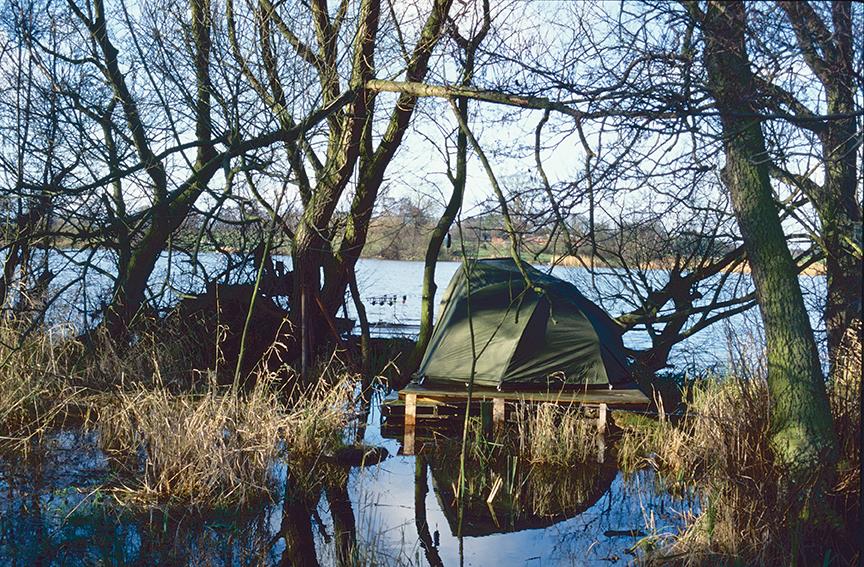The Waters That Made You Tingle
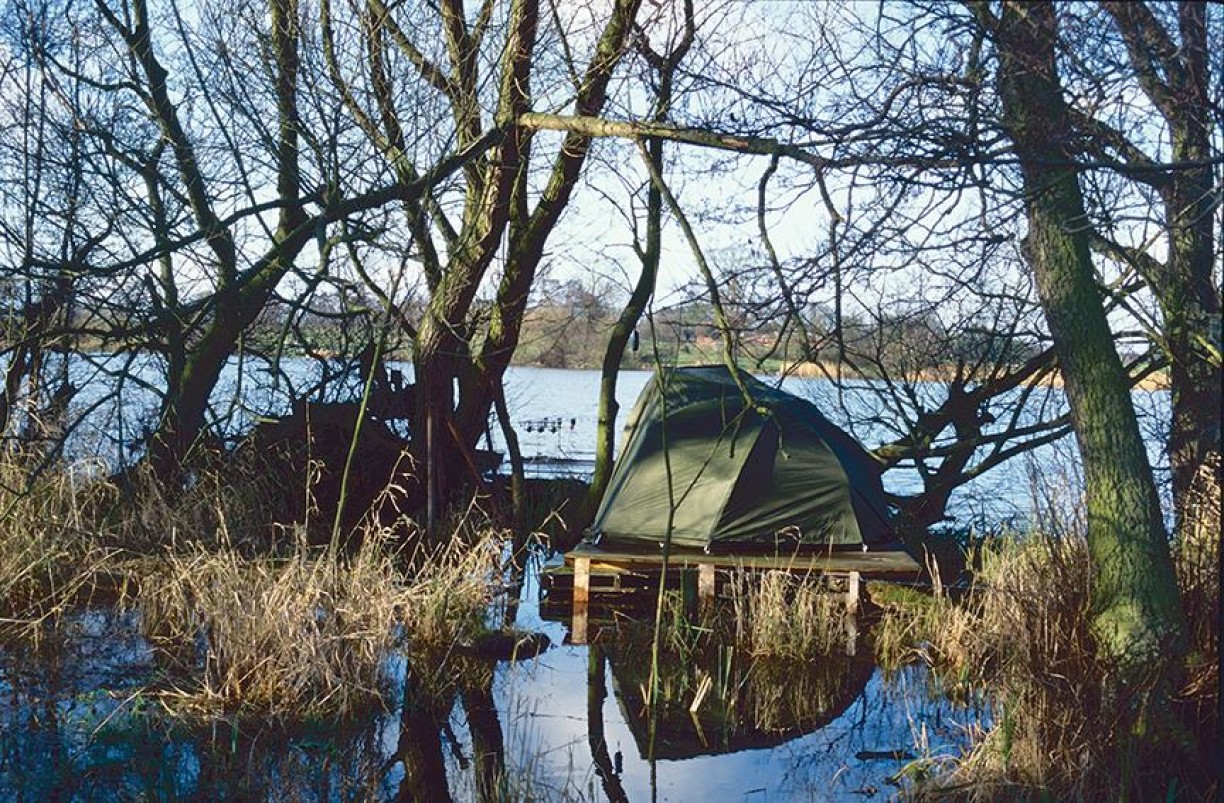
1. The mighty Wraysbury by Dave Lane
From magical, secluded bays, to wild, windswept openness: Wraysbury was 120-acres of beauty and the carp that swam in her matched that awesomeness. Dave Lane reflects on his time there as ‘the best of my angling life’ and here’s why…
CARPOLOGY: How intimidating was Wraysbury when you walked its banks for the first time?
DAVE LANE: “Unbelievably, I had a tiny map of about 2” square and, once I realised the scale of the reality, I seriously regretted telling all my mates that I was going to fish there! It was a different league for me.”
CO: What made Wraysbury so special?
DL: “The history, the mystery, the sheer size of the place, and the feeling it was the ultimate challenge at that time. Also, the Percy pub, off-licence and Chinese were all on the banks, which helped a lot.”

CO: What was the buzz like around the lake when someone caught one of the A-team members?
DL: “Oh, it was off the charts—nothing like it would be today. We had parties that literally went on for days after a major capture. It was all very private and personal amongst close friends as there was no internet and no one gave a toss about what others thought outside of our little circle. But those in the know would all rock up and the beers would flow, everyone was genuinely happy for whoever had caught.”
CO: What was your favourite swim and why?
DL: “I didn’t really have one favourite swim as such. I loved Bryant’s Point as it was a great boating swim in big winds and it was close to the pub. Sunnymeads Corner (the original one) was a favourite in spring and the Rocky Barge after I rebuilt it was a great place to be. The Finger Bays, although I never caught from there, were magical and secluded.”
CO: How many were regularly fishing there during your years, and how does that differ from today on just the North Lake?!
DL: “I think there were about six or so the first year, but a few more mates arrived from Horton and other lakes on year two, probably a dozen or so in total but not at the same time. Nowadays, it’s a totally different ball game: the North can have a dozen anglers mid-week in the winter, but the stock is there to support it, and times have changed.”
CO: Did you ever see anything monstrous that never got caught?
DL: “Regularly—the big Leather never saw the banks, but we used to feed it during my first spring on the lake and we saw him every year. Olive was last caught a good few years before I turned up and never came out again, but I watched her mug me off in the margins and on a floater. I saw a fish just once called ‘Johnny Allen’s 29’—I recognised it instantly due to its black-and-white appearance. This was many years after he’d had it and it never came out again. ‘The Fully’ did 13 years between captures as well, so yeah, there were a few.”
CO: Finally, sum up your time on Wraysbury in a sentence or two.
DL: “The best time of my angling life.”
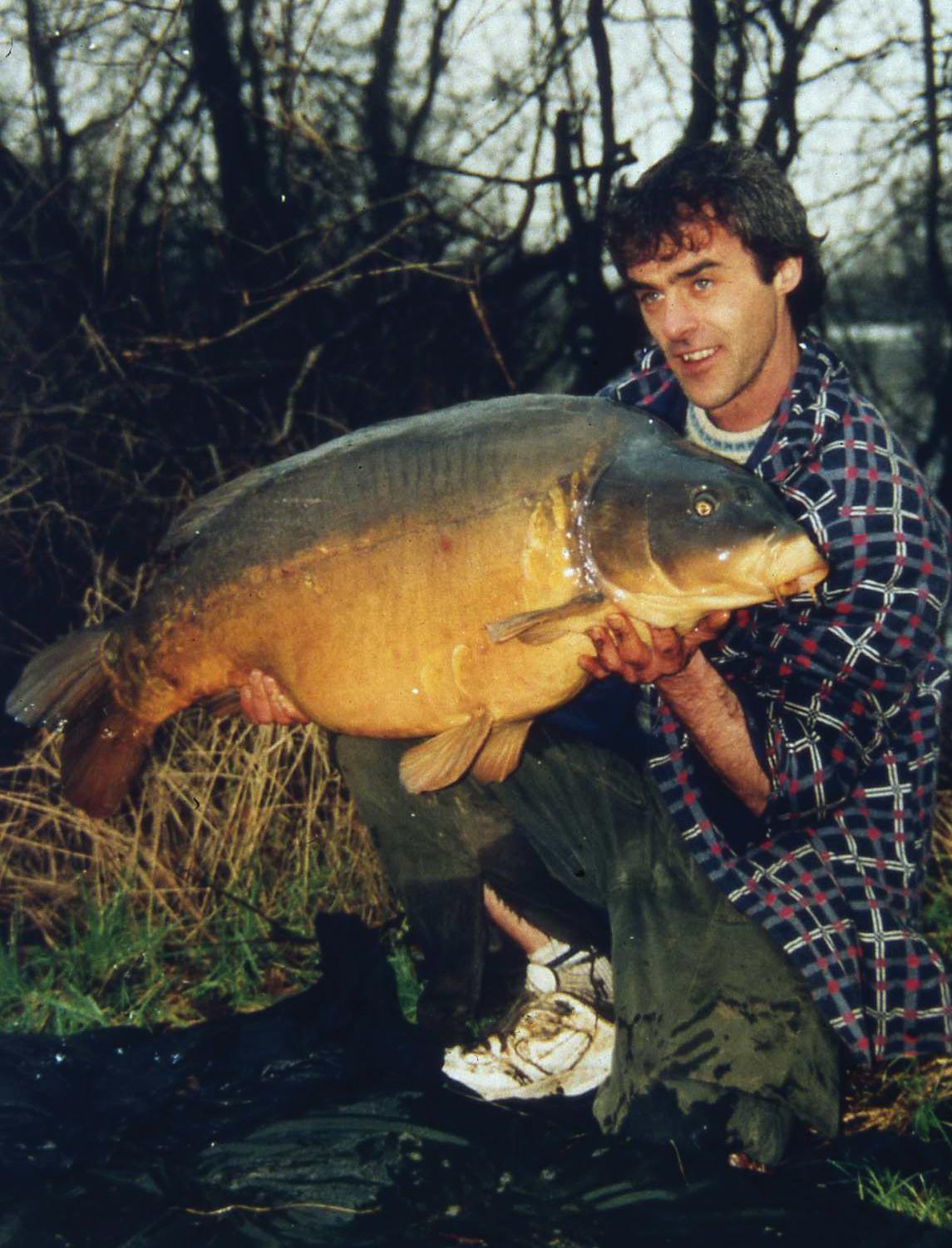
2. Redmire Pool: ‘the epicentre of big carp’ with Kevin Clifford
Surely it doesn’t get any more exciting than Redmire in the ’70s?! In today’s terms, it would be like discovering a 2-acre weedy pool containing 50 x 40lb uncaught Leney’s, with a couple of 60s thrown in for good measure! Redmire historian, Kevin Clifford gives us a quick insight into what it was like to fish such a place…
CARPOLOGY: Could you give us a snapshot of what it was like fishing the pool during your time on there, from 1975 and 1976?
KEVIN CLIFFORD: “Prior to my fishing Redmire, the water had been very much at the epicentre of big carp captures and developments since the 1950s. It had so much history already enshrined by the captures, photographs and writings of Bob Richards, Dick Walker, Eddie Price, Roger Bowskill, Jack Hilton, Bill Quinlan, Tom Mintram, John McLeod, Bill Walkeden, Chris Yates, Rod Hutchinson and others, that gaining a place on the syndicate was like winning the Pools for a young aspiring carp angler from Yorkshire.
“I had seen the lake in 1974 when Jack Hilton surreptitiously sneaked me down in the boot of his Jaguar for a quick look around, but in June 1975, as a new member, I was very fortunate to be down all alone for a couple of days before the season started. The carp felt unpressured after the winter and spring, and I saw large numbers of carp feeding on the shallows during the day. I counted at one point over 40 carp that I estimated to be around or over 20lb. I told myself that if I couldn’t catch a few of these in a three-acre pool, I would be better off giving up fishing.”
CO: Did you ever witness any carp of truly biblical proportions?!
KC: “No, as I’ve always stated when asked, I never saw anything that I thought was bigger than fish that had been caught in recent years by syndicate members. The largest I saw in the water was the famous ‘38’ that had been caught on a number of occasions, which ultimately, some years later, became Chris Yates’ 51-pounder. The next largest I saw was one that had been caught by Rod Hutchinson (his largest carp at the time) at 32lb, a fish I subsequently caught myself at 30lb 6oz.
“One dark night, when I was on the lake by myself, I hooked a carp which I could not get under any sort of control at all. I must have had it on for 20 minutes or more. I started to wonder about the mystical ‘four-foot-long common’ that some members claimed to have seen, but no one had ever landed. Eventually, the fish simply shed the hook. Later, the following morning, I had another bite and hooked a fish that I literally reeled in like a 4lb bream. It turned out to be a 22lb common hooked cleanly in the mouth. But it had a split in its tail going all the way from the root. I believe that I’d simply hooked that same fish in the tail during the night and the hook had eventually torn free.”
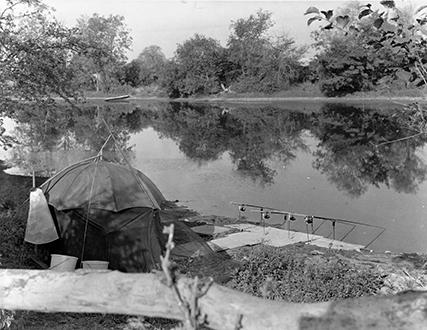
CO: Did you ever have a rough idea of how many carp were in the pool?
KC: “The Pool held an incredible number of carp. In terms of 20-pounders per acre, it was exceptional, probably unique, even perhaps to this day. I’m guessing to some extent, but based on what I saw, I estimate that there were around 50-60 carp upwards of 18lb, plus a few smaller ones. Fish over 25lb, there were not that many, and only a handful that were around 30lb or more. Certainly, in the early and mid-1970s I very much doubt there was another fishery in the country that had anything like that density of large carp.”
CO: What did you find was the key to catching from this small, intimate pool?
KC: “For me, success in 1975 came by using very large quantities of sweetcorn. The little, sweet, yellow grains had been used before me by others, such as Chris Yates, Rod Hutchinson, John McLeod and Bill Walkeden, and with some success, but they believed it had ‘blown’. They had used very small quantities. What none of them understood was just how much of the stuff a carp could easily consume and that preoccupation with the stuff came by regularly feeding it, in relatively large quantities. With a handful of 20-pounders in your swim, it was pretty much impossible to overfeed them. I’d learnt these lessons and how to use sweetcorn effectively in the previous few years in various different venues in Yorkshire, Cambridgeshire and Cheshire.
“By 1976, quite a lot of the Redmire carp had learnt the dangers of sweetcorn, and it was nowhere near as effective. I then turned to various seed baits, such as Red Dari and Buckwheat with some success, but in truth, they didn’t match sweetcorn. In the close season of 1977, there was a serious falling out in the syndicate, which ended with about half the members (including myself) no longer fishing there.
“It was a fantastic carp water to be allowed to fish, for a multitude of reasons, and for that I am eternally grateful to Jack Hilton and Tom Mintram. For me, it certainly had some kind of magical quality that is difficult to describe and quantify, which I have rarely come across before or since in a fishery. I certainly remember that wonderful Pool and my days there, and the good friends I made with a great deal of fondness.”
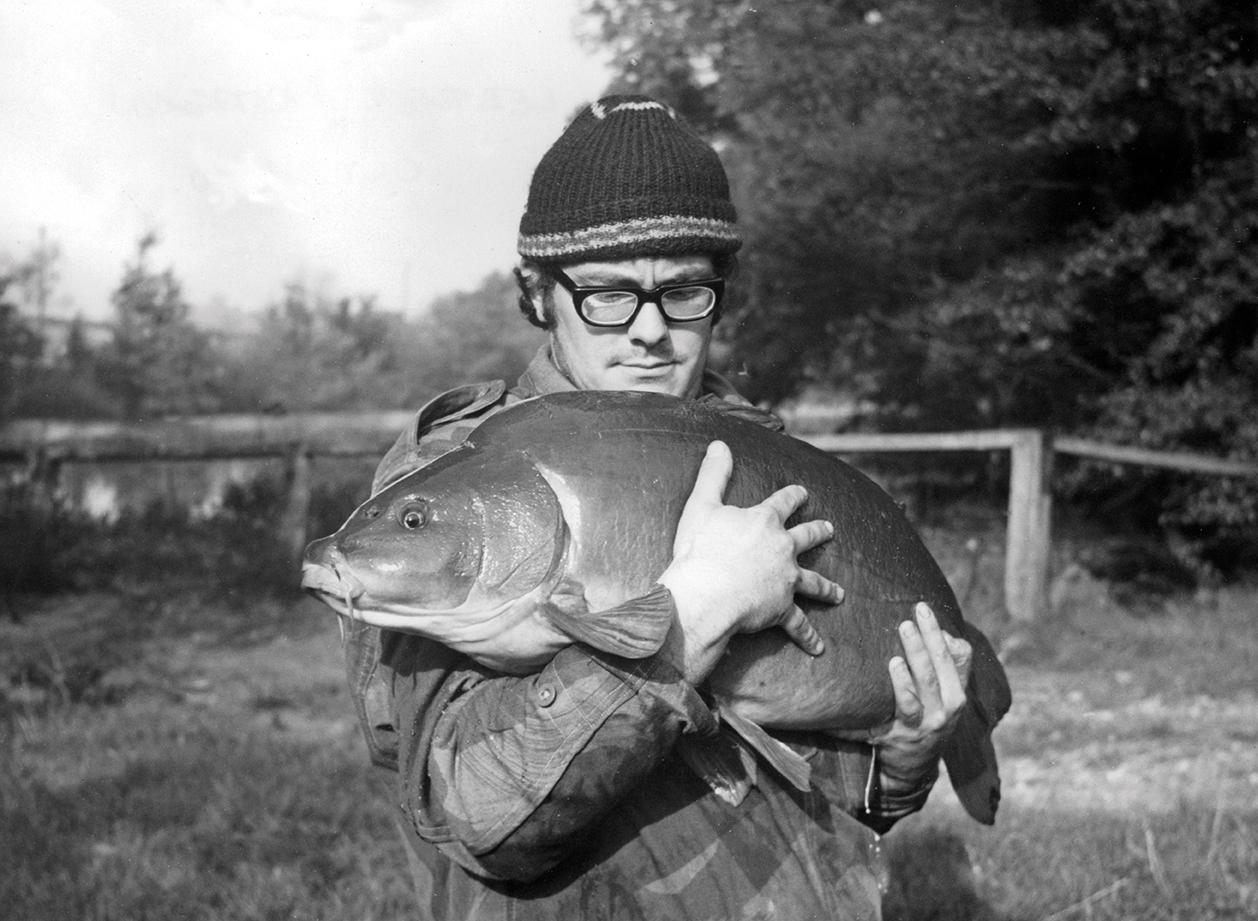
3. The Mere: the ultimate headbanger test by Steve Briggs
Catching the Black Mirror from the Mere is surely carp fishing’s equivalent to climbing Everest? One man who achieved that feat is Steve Briggs…
CARPOLOGY: When did you start on The Mere?
STEVE BRIGGS: “I first walked the lake a couple of years before Jason Hayward’s capture as I heard on the grapevine about the fish, but I didn’t fished it then. I eventually returned from 2005 to 2010, but more full-on during the last two years of that period.”
CO: How prepared—mentally and physically—did you have to be before taking on the challenge of The Mere?!
SB: “In hindsight, I wasn’t prepared at all when I started; it was simply the hardest challenge I’ve ever taken on, both physically and mentally! I gradually improved in both aspects over time, and it was probably some of the best fishing I’ve done.”
CO: Talk me through what it was like just getting into The Mere?!
SB: “I always got butterflies going in and out—that never changed. There was always a nervousness but also a massive buzz every time just walking on to that place; a feeling I never got anywhere else.”
CO: Did you ever walk in during daylight carrying fishing kit, or was everything already stashed there from an undercover night operation?!
SB: “I always had gear stashed at the lake: bedchair, boat, etc., the rest I used to drop by the roadside bushes and then stash the car some distance away before sneaking in. Going in daylight was okay if you were careful enough.”
CO: Would the advancement in tackle design make fishing the Mere in 2023 any easier than it was when you fished it, or would it be tough regardless?
SB: “It would be tough regardless, but how I wish I could’ve had Scope rods and R4 alarms with stealth mode back then! They would’ve made things somewhat easier.”
CO: How often did you see a carp?
SB: “I found the more in-tune with the lake I got, the more fish I saw. To start with, I saw very little, but leading up to the BM capture, I was finding him and his companions virtually every day but catching was a different matter, though.”
CO: Did you ever see the mythical monster common?
SB: “Yes, I saw the common three or four times, always in the same area at the top end of the lake. I had a bait on its nose for an hour one day but it showed zero interest. One time I saw it side by side with the Black Mirror—it was wider but maybe a bit shorter.”
CO: What made The Mere so special?
SB: “There isn’t another water like it. The wild unique atmosphere, the feeling of just me against the fish and just the aura of the place. After fishing the Mere, it was years before I got the buzz back for UK waters as nowhere else compared to it. I just feel privileged to have been there.”
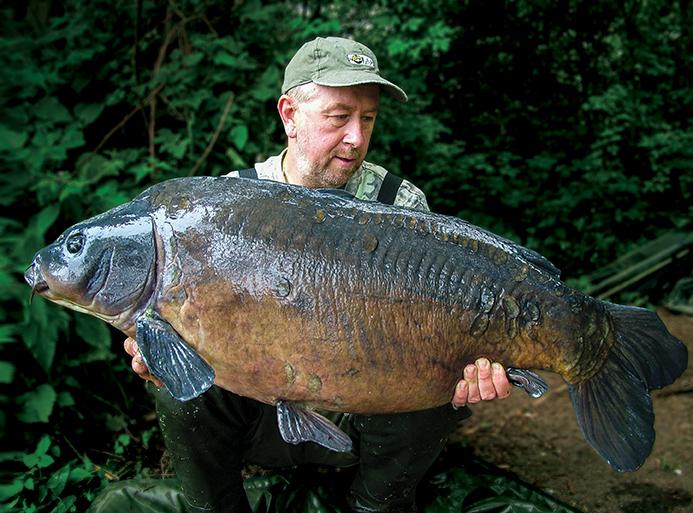
4. Horton: ‘the lake, the carp, the camaraderie’ by Keith Jenkins
“For anyone on those first couple of years on the syndicate, there will never be another lake like Horton,” says Keith Jenkins with a smile. “The incredible carp, the lovely people who fished there—even Concorde! But mainly it was the bond that lasts for decades, of friendships that are unbreakable. Anyone can catch carp, but not everyone can make friends for life. Make sure you do both.”
CARPOLOGY: What years did you fish Horton?
KEITH JENKINS: “Laney and I managed to get on the very first Horton syndicate in 1991. We were second in the queue outside the gates on June 14th, behind CP and Robbie Stoddard, and that very first evening in the car park was a preview of what was to come over the next few years. My last season was 1996/97.”
CO: Describe the feeling you had every Friday afternoon whilst on your way to Horton for the weekend?!
KJ: “I worked in Mitcham at the time, and I tried to get away as early as possible on Friday afternoon. It was pointless being at work after about midday because I could think of nothing else.”
CO: What made the lake so exciting at that time?
KJ: “In that first year, it was new to all of us. There was no hierarchy, nobody was top rod from the previous year, we were all at the same level and were happy to learn or teach accordingly. The camaraderie and banter were great, no jealousy or backbiting. In all the time I was on there, the only discord was created by some ‘named anglers’ who thought they were above everyone else. It didn’t take long for them to realise that wasn’t actually the case!”
CO: Describe the buzz around the lake when one of the A-team members was caught?
KJ: “The very first fish out on the first syndicate, 18 minutes after midnight, was Jack ‘The Net Ripper,’ and the atmosphere around the lake was electric. Every fish was celebrated, and not just by the captor, but when one of the bigger fish made an appearance, the crowds tended to gather. They didn’t become the A-team for a few years, but then we realised what the lake was actually capable of producing. I think, by the time I left, there were six different forties in the lake, which back then was practically unheard of.”
CO: What made Horton so tricky?
KJ: “Back when we started on there, it was really tough: 55 fish in 14-acres, depths that averaged about 15ft and weed that grew right to the top! It wasn’t unusual for a few guys to go a whole year without landing a fish (me being one of them!). It stayed that way until about 1995, when a few more fish were stocked into the lake, but in those early years there were so many lessons to be learned, and ones which certainly helped at future venues.”
CO: At that time, the lake held the finest stock of carp in the UK, but which were your favourites?
KJ: “There were some stunning carp in there back then, and not all of them were in the A-team. My favourite had to be Shoulders—my first thirty (or so I thought!) at 38lb 1oz, and from the swim that bore its name after that capture. That said, how could anyone not love the Woodcarving—definitely one of those ‘it doesn’t matter what it weighs’ carp?”
CO: Your most successful years there were towards the end of your time—why do you think that was?
KJ: “For me, 1996/97 was a great time on Horton. Great people, great camaraderie, and great fishing. I had one of those unbelievable seasons when it seemed like everything I landed was over forty-pounds! It’s difficult to pinpoint why—more fish getting caught generally, our little baiting team all catching regularly, more relaxed about the fishing and just going along to have a few nice weekends. But mainly, luck. I landed eight fish that season, five of which were over forty-pounds. Just plain good luck… and good hookholds!”
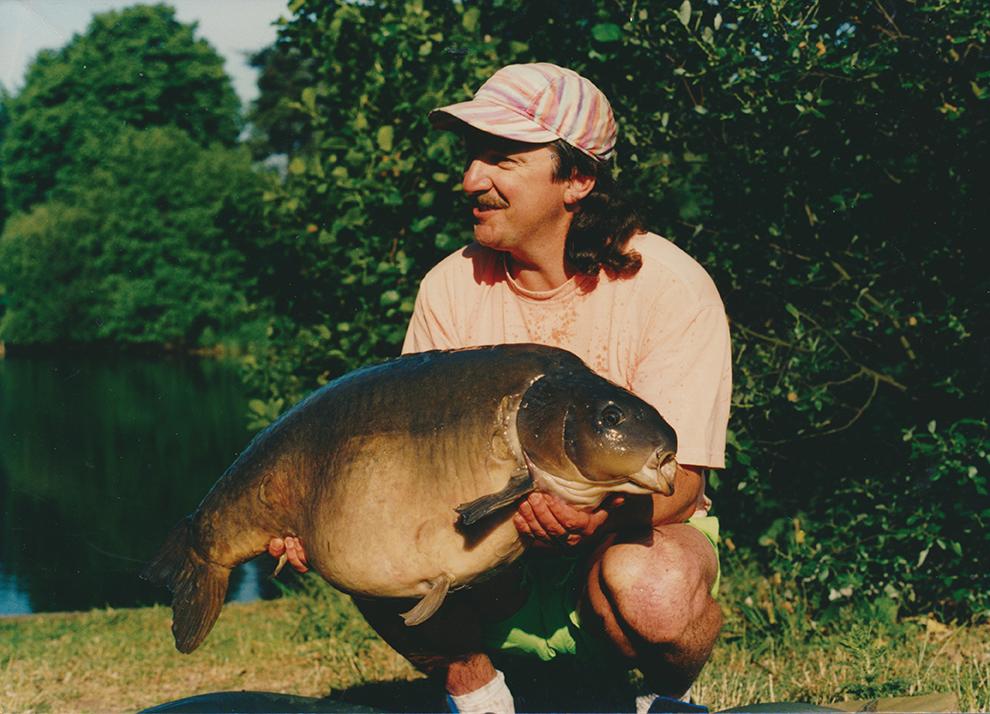
5. Conningbrook By Mike ‘Spug’ Redfern
The Brook, as it was known, had a fearsome reputation of being as ‘hard as nails’. Season-long blanks were common but the atmosphere and camaraderie—just like the other six special venues—is what made it stand out and one of the main reasons Mike ‘Spug’ Redfern loves the place so much
CARPOLOGY: What years did you fish Conningbrook?
MIKE REDFERN: “Between 1999-2001. In that time, Two-Tone went from 54lb to 60lb and became the British record.”
CO: The social side was a big part of the ‘Brook’s’ story—just how special were those gatherings?
MR: “They were amazing because the fishing was so slow. We put as much effort into organising barbequees as we did the fishing! Plus, if you caught one, then there was always a little carp party held for you. Everyone was always pleased to see one get caught and never once did I notice any green-eyed monsters coming out.”
CO: So what was the atmosphere like when Two-Tone did came out?!
MR: “It was really exciting because he (or she) just kept getting bigger, and when nudging the record, and then taking the record, the buzz around the lake was awesome. One beep from your buzzer and your heart jumped out of your chest thinking it might be him!”
CO: Just how hard was the lake?
MR: “It had a fearsome reputation of being ‘ultra difficult,’ and it was. There were only 18 (ish) fish in 20 weed-choked acres (prior to them digging the back lake through), and the fish were good at not getting caught. However, to me, it was no more difficult than fishing any other weedy water; the challenges were the same: it was your mindset you had to change. You had to be patient and just take it all in, and give it your best shot. I did okay, landing 4 fish in 72 nights.”
CO: If you had the exact same stock from your time in there today, do you think the atmosphere would differ or be the same?
MR: “Everything is so different now, there are fifties everywhere, back then, there were only a handful in the whole country. A fifty back then was almost a miracle fish, so you were really fishing for the ultimate buzz if you were going for Mary, Two-Tone, the Black Mirror and the likes of Heather, Bazil etc.—a bit like the Burghfield Common these days. So it can’t be exactly the same, but half of the buzz of fishing the Brook were your fellow anglers, many of them are still good mates today!”
CO: And what of Conningbrook today? Do you know if it’s producing any good fish in 2023?
MR: “I believe there are a few anglers still plodding away on there, and I’m fairly sure there’s the odd good one still left, like Tom’s Pet—he’s an old one now!”
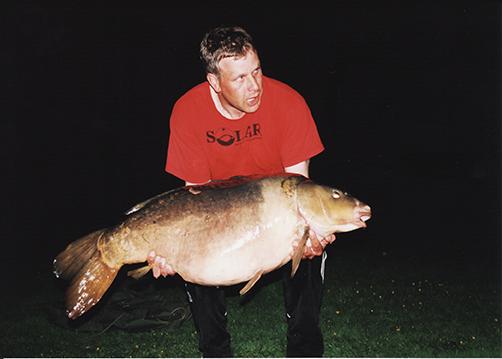
6. Longfield: ‘the development race’ by Keith Sykes
From leadcore and critically balanced hookbaits to Kevlar bow string hooklinks and bent hook—a lot happened in a short period of time at Longfield, as ex editor of the Longfield News, Keith Sykes will now explain…
CARPOLOGY: What years did you fish on Longfield?
KEITH SYKES: “I started fishing on a winter ticket in 1987—I think it cost the princely sum of fifteen quid! I remember it vividly: it was February, and I fished on the Bungalow Bank. The mud was horrendous and most swims had carpets in! I lost one the next morning, the first bite the lake had done since October the previous year!”
CO: Innovation on all fronts was hitting new levels around this time. What developments did you witnessed?
KS: “I guess the first thing that comes to mind was leadcore. I started using Ker-plunk leadcore. A year or so later, Rob Maylin poo-pooed it! We were also using Kevlar bow string for hooklinks—the stuff was awesome. Then there were the critically balanced baits and Jon Holt quietly developed the bent—or cranked hook—his was very special, and only for him to divulge.”
CO: Who were you fishing alongside?
KS: “The calibre of angler on there was immense: Johnny Allen, Jon Holt, Ian Booker (RIP), Steve Alcott, Terry Disdale, Del Poulton, Pete Bond, Martin Lock, Travolta, Steve Briggs, Alan Smith, the list goes on. Ritchie McDonald had left the previous year.”
CO: And as for the camaraderie…
KS: “Incredible. I remember once my mate Steve got to the lake and his radiator blew up. Things were tight, so we all rallied around and got the money to fix the car—no one ever asked for their money back! Incredible bunch—the famous Longfield Drinking Team!”
CO: How was an A-team capture celebrated?!
KS: “A fish caught was a ‘Percy’ celebration, say no more, or as we’d say, “no problem!” I remember well when Big Nod caught Jack, a rare winter capture, we went up the Percy to celebrate, and Nod had more than a lean on!”
CO: What made the fishing at Longfield so tricky?
KS: “The weed was horrendous, wall to wall and bottom to top, even in eighteen feet or more. The depths didn’t help, and the fish were pressured on the relatively small lake. A lot of the time the weed enveloped you, so you were trying to find small spots and accurately cast into tiny holes.”
CO: What was the feeling among the members at the time about the fish being moved to Horton?
KS: “The fish move had mixed views, most didn’t approve, and as it turned out, it was totally unnecessary. The sad thing was the demise of the Longfield characters due to disease and stress. Obviously Horton was/is an incredible venue and is well managed now by RK Leisure.”
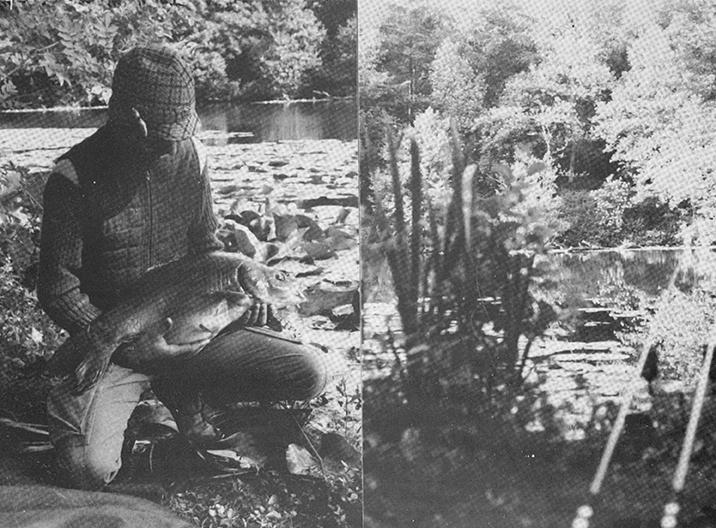
7. The Mangrove and Birch Grove Effect by Tim Paisley
‘Serenity is not freedom from the storm but peace amid the storm.’ Debenport.
I have to put being introduced to the Shropshire mere, the Mangrove, in June 1983 into perspective to fully explain the impact it had on me. Having devoted a number of chapters to the Shropshire meres in A Carp Memoir it is hard to capture the feel of them in a few hundred words!
By early 1983, the serenity of the influential Snowberry was behind me and I was exploring pastures new, which included distant ‘circuit’ waters (of their day): Waveney D Lake, the Tilery and Darenth Tip Lake, and local waters. The local waters were neither peaceful, nor big fish waters, and weren’t even bivvy-able: they certainly didn’t equate to my idea of bivvy-life carp fishing. Then Dave Preston introduced me to this remote, beautiful, well-stocked 15-acre Ice Age mere with just two swims on it that hardly anyone seemed to know about.
All that alone was enough to make the place addictive, but there was more, a further dimension that I felt, but couldn’t put my finger on then, and can’t really, even now. It was as though I’d come home to rest after an arduous journey, which perhaps my life was to that point. This isn’t retrospective nostalgia because I put those feelings of serenity in print immediately after that first ten-day session, and much later reproduced the passage in A Carp Memoir. ‘The First Day of the Rest of My Life’ chapter includes the following:
‘…the combination of the beautiful cool dusk closing down over the water and this lovely, delicate little bird singing fit to bust made me feel utterly nostalgic for something I couldn’t put my finger on. Some long-buried memory? The Snowberry days? No, it wasn’t that. It suddenly occurred to me that the nostalgia was for then, for that moment. It wasn’t nostalgia at all but that rare commodity peace of mind, such an uncommon visitor that I’d had a struggle to recognise it. It had never been better, and it never could be.’ And it never has been.
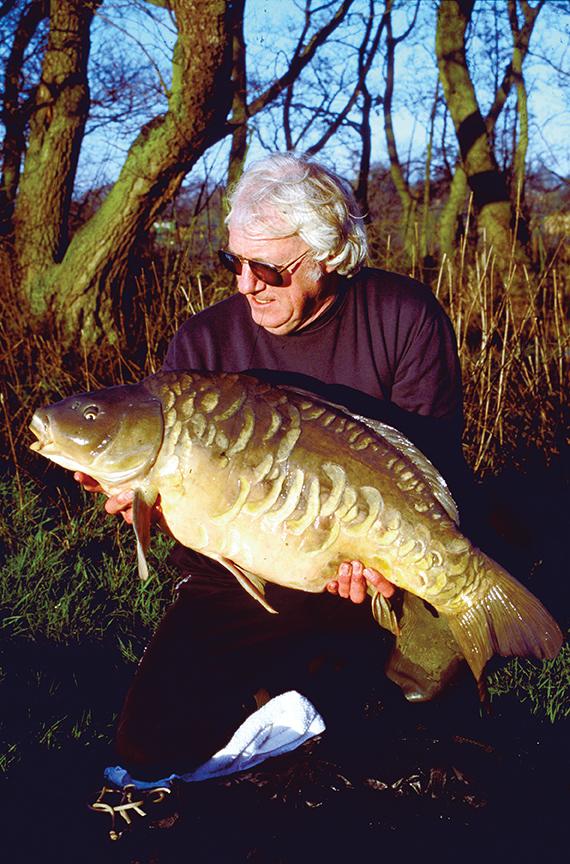
And then there was the mystery. No one was fishing the place so the fish had no names, and were an unknown quantity. The adjacent Fenemere was producing good thirties, and later a stunning forty, so the Mangrove seemingly had the same potential because it contained the same Leney-strain Isle fish. On top of all its other merits, it was, or had the potential to be, a big fish water, which it turned out to be for its day with a number of fish to big thirties, and, much later, producing a forty.
There was another element. Not all carp anglers love isolation, but I do. The original cast list of two, Dave and me, grew and for a while the peace and isolation were compromised, but because over half the swims are only accessible by boat, isolation was, and is, always attainable there. The pictures I’ve chosen out of hundreds in my files sum up the peace, the isolation, and the potential. I recall that when my friend Jerry O’Regan gained a place on the syndicate and first fished the water, he was stunned, and his first words to me were, “Why would anyone ever want to fish anywhere else?” That was many years ago and I think Gerry still feels the same about the water. I’ve heard the same reaction from other old-school carpers. The Mangrove can be addictive.
From June 1989, we controlled the fishing on the Mangrove and Birch Grove for thirty years on behalf of the owners, the Gwilt family. The nineties were halcyon years for me, and had it not been for the fact that I was an editor of a newsstand magazine that I felt I perhaps had to move on to ‘prove myself’. A writer can’t keep revisiting the same venues and fish indefinitely, and I moved on, but my deep affection for the Mangrove and Birch Grove remains.
Forty years on, they remain part of my way of life. Going across for the ‘opening week’ on Birch each year to fish with Dave Haughton still feels likes going home, and Birch Grove will be my final resting place when my ashes join Mary’s there. The peace I have felt from my first day on those ancient meres will become permanent.
